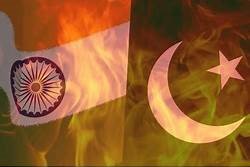In 2025, the ongoing conflict between India and Pakistan reached a critical juncture, leading to a series of military engagements and diplomatic crises. What started as a terrorist attack quickly spiraled into full-scale military operations, pushing the two nuclear-armed nations to the brink. Below is a comprehensive overview of the key events, the actions taken by both sides, and the international response.
The Spark: April 22, 2025 – Terrorist Attack in Kashmir
The tensions between India and Pakistan flared dramatically on April 22, 2025, when a terrorist attack took place in Pahalgam, a scenic town in Indian-administered Kashmir. The attack, which targeted a local market, resulted in the tragic deaths of 26 civilians. India quickly accused Pakistan of being complicit, blaming Pakistan-backed militants for the strike. While Pakistan vehemently denied these allegations, the attack was seen as a direct provocation, given the region’s history of violence and militancy.
The fallout from this incident was swift. India, under intense public pressure, demanded immediate action from Pakistan to curb cross-border terrorism. This attack was seen as the breaking point, and the political leadership in India felt that enough was enough.
India’s Response: April 23, 2025 – Diplomatic and Military Escalation
In the aftermath of the attack, India took several significant steps. On April 23, India suspended the Indus Waters Treaty, a longstanding agreement between the two nations that governs the sharing of water resources from rivers that flow through both countries. This was a severe move, as water has always been a sensitive issue between the two nations. Along with this, India closed the Attari-Wagah border, which is the main land crossing point for trade and people between the two countries.
Diplomatic ties also hit rock bottom as India expelled Pakistani diplomats from New Delhi, and Pakistan responded in kind, expelling Indian diplomats from Islamabad. India also suspended all visa services for Pakistani nationals, signaling a complete breakdown in civil exchanges between the two countries.
In response, Pakistan shut down its airspace to Indian flights, and declared it would no longer abide by the Simla Agreement, a 1972 treaty that governs the relationship between the two countries, including the handling of the Kashmir issue. This was a clear escalation, as it indicated Pakistan was ready to take more drastic steps if needed.

May 7, 2025 – Operation Sindoor: Full-Scale Military Strikes
By early May, the diplomatic impasse had turned into an open military confrontation. On May 7, 2025, India launched “Operation Sindoor”, a targeted military operation that involved missile strikes on several locations across Pakistan. India’s Ministry of Defence claimed that the operation was aimed at dismantling what it called “terrorist infrastructure” that had been used to launch attacks against Indian forces.
The targets included military installations and alleged militant training camps. India’s actions were framed as necessary to protect national security and deter further attacks. Pakistan, on the other hand, claimed to have shot down several Indian fighter jets in retaliation, and reports emerged of fierce air-to-air combat taking place over the disputed borders.
This operation marked the first full-scale military operation between the two countries since the 1999 Kargil conflict, and it was widely condemned as a dangerous escalation. The world watched with bated breath, fearing that the situation could spiral out of control, especially given both nations’ nuclear arsenals.
The Ceasefire: May 10, 2025 – Diplomatic Mediation and Negotiations
As the military situation worsened and fears of an all-out war grew, international diplomatic efforts intensified. The United States, along with several other countries, including China and members of the G7, called for an immediate ceasefire and urged both countries to return to the negotiating table. The UN also intervened, calling for de-escalation and the start of peace talks.
After several days of back-and-forth negotiations, which included high-level talks and backdoor diplomacy, India and Pakistan agreed to a ceasefire on May 10, 2025. The U.S. played a significant role in facilitating the discussions, offering to mediate between the two nations and guarantee compliance with the ceasefire agreement.
The ceasefire, though significant, is fragile. There are reports that tensions still run high in regions like Jammu and Kashmir, where sporadic skirmishes and drone attacks have continued. Both nations are said to have committed to holding high-level military discussions on May 12, 2025, in an attempt to address the underlying issues and prevent future conflicts.
Ongoing Tensions: What’s Next?
Despite the ceasefire agreement, the situation remains tense. Experts are concerned that while the ceasefire has temporarily halted open hostilities, the core issues between India and Pakistan remain unresolved. The Kashmir dispute continues to be a major point of contention, with both nations claiming the region in its entirety, though each controls only part of it.
The possibility of a broader political resolution remains uncertain. The international community has called for restraint and urged both sides to seek a political solution, but with deep-rooted animosities and the looming threat of terrorism, the path to peace is fraught with challenges.
As both countries prepare for military talks and continued diplomatic efforts, the world watches, hoping that this ceasefire holds and that future engagements focus on peace rather than conflict.
The International Perspective:
The international community has expressed growing concern over the potential for nuclear escalation between India and Pakistan. Both countries have nuclear weapons, and the presence of such weapons only heightens the stakes. Global leaders are urging both nations to find ways to resolve their differences through dialogue rather than military means. The situation in Kashmir, however, remains one of the most sensitive and intractable geopolitical issues in the world today.
The India-Pakistan conflict of 2025 has once again highlighted the fragility of peace between these two nations. What began as a terrorist attack has led to significant military engagements, but the international community’s swift diplomatic efforts have prevented a full-scale war. The ceasefire agreement of May 10, 2025, offers a glimmer of hope, but with unresolved issues, especially surrounding Kashmir, the peace process will be an uphill battle. The coming days and weeks will be crucial in determining whether lasting peace can be achieved or if tensions will flare up once again.
For further information, visit: https://www.bing.com/
Read our previous articles: https://scitechupdate.com/index.php/researchers-develop-biocomputer-by-linking-16-brain-like-structures-grown-from-human-cells/
https://scitechupdate.com/index.php/breakthrough-material-nasas-grx-810-could-change-everything
Breakthrough Material: NASA’s GRX-810 Could Change Everything
https://scitechupdate.com/index.php/scientists-synthesize-diamonds-in-just-15-minutes
https://scitechupdate.com/index.php/researchers-notify-of-u-s-groundwater-depletion-by-2050
https://scitechupdate.com/index.php/big-achievement-first-ever-capture-of-x-ray-image-of-single-atom
https://scitechupdate.com/index.php/china-is-generating-heat-waves-across-the-pacific-ocean
https://scitechupdate.com/index.php/super-material-could-have-more-potential-than-graphene
https://scitechupdate.com/index.php/first-5g-enabled-surgery-performed-by-doctor
https://scitechupdate.com/index.php/two-new-covid-variants-called-flirt-in-the-united-states
First 5G-enabled Surgery performed by Doctor (scitechupdate.com)
Hitchhiking Aliens: New Research into Panspermia (scitechupdate.com)
